In the movie The Sunshine Boys, an aging comedian explains how to get a laugh on stage: “Fifty-seven years in [show] business, you learn… what words are funny and which words are not funny. Words with ‘k’ in them are funny… Pickle is funny.”
Pickles aren’t just funny and fun to say; they’re also beloved around the world, thanks to their zingy flavor, satisfying crunch, and long shelf life. But beyond the punch they add to a sandwich, are they actually good for you?
In this article, we’ll dive into the fascinating world of pickled foods — from ancient fermentation practices to modern nutritional science — to explore their health implications.
What Are Pickles and How Are They Made?
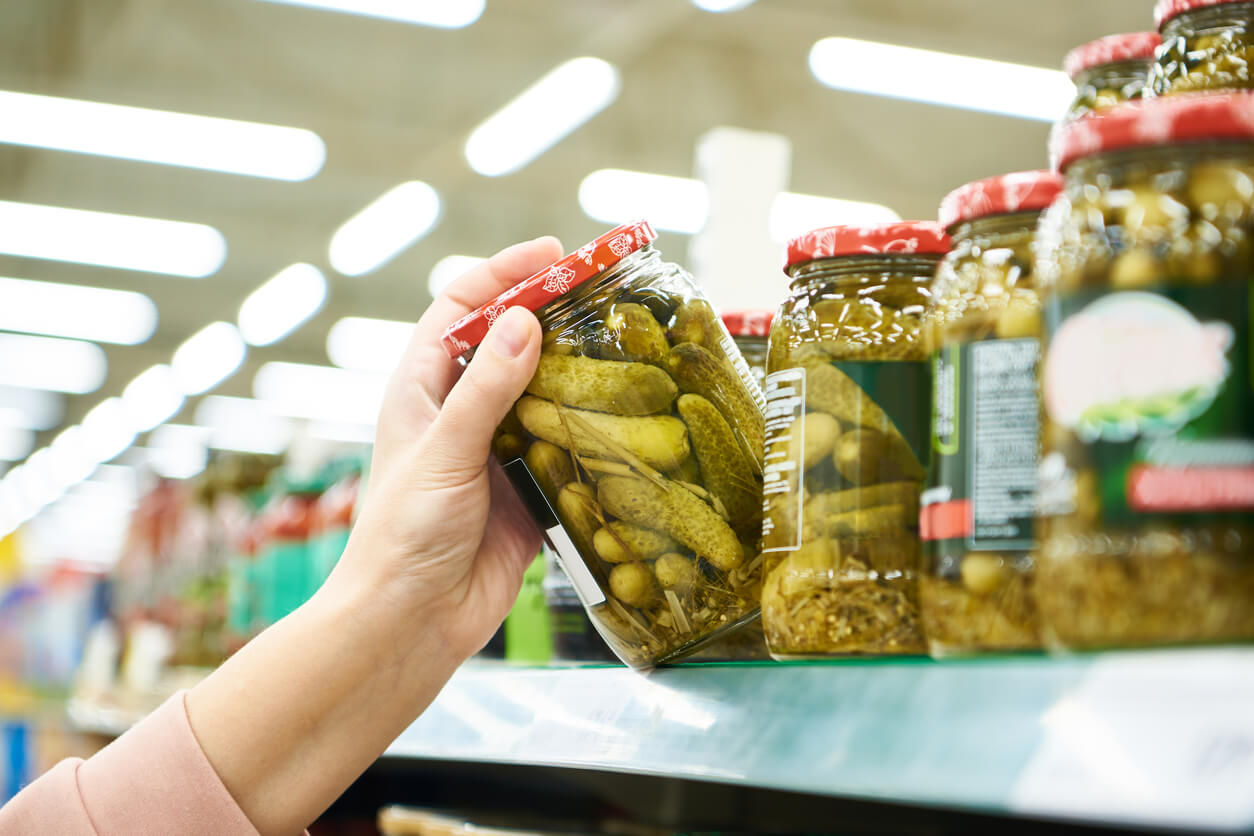
Pickling preserves food using acid to create an environment where harmful bacteria can’t survive, thus extending its shelf life. While all pickles rely on acidity for preservation, there are two fundamentally different ways to achieve this: fermentation and direct acidification.
Fermented Pickles (Lacto-Fermentation)
These pickles create their acid through bacterial fermentation. Naturally occurring Lactobacillus bacteria convert sugars in the vegetables into lactic acid. This process requires only a high enough concentration of salt and time — the salt creates an environment where beneficial bacteria thrive (they use lactic acid for energy) while harmful ones can’t survive.
Fermentation occurs in an oxygen-free (anaerobic) environment. As the bacteria work, they steadily increase the acidity until the pickles are preserved. Traditional sauerkraut, kimchi, and old-fashioned barrel-cured dill pickles are made this way.
These pickles are alive with beneficial bacteria until you open the container. Once exposed to air, refrigeration slows further fermentation, and they’ll keep for several months.
Vinegar Pickles (Quick Pickles)
These skip fermentation entirely by using pre-made acid, typically white vinegar. The vegetables are immersed in a brine of vinegar, water, salt, and often sugar and spices. The high acidity immediately preserves the food, preventing bacterial activity.
Most commercially available pickles are made this way, and then pasteurized via high heat. This makes them shelf-stable, so you can expect crunchy and tasty pickles that will not kill you even if you forgot them in the back of the bottom shelf of your pantry during the Carter administration. (See, that’s funnier than “Ford administration” because of the “k” sound.)
You can also make quick pickles at home that will keep in the refrigerator for several weeks without heat treatment.
The key distinction: Fermented pickles develop their acidity slowly through bacterial action, while vinegar pickles get their acidity instantly from added vinegar.
Salt Stock Pickling
A less common method, salt stock pickling, uses a concentrated brine (typically 15–20% salt) to preserve the unfermented pickles. This is more like “suspended animation” than true pickling — a way of stopping time’s ravages so you can store the pickles and then pull them out of the salt and use them after the growing season has ended.
Common Foods That Are Pickled
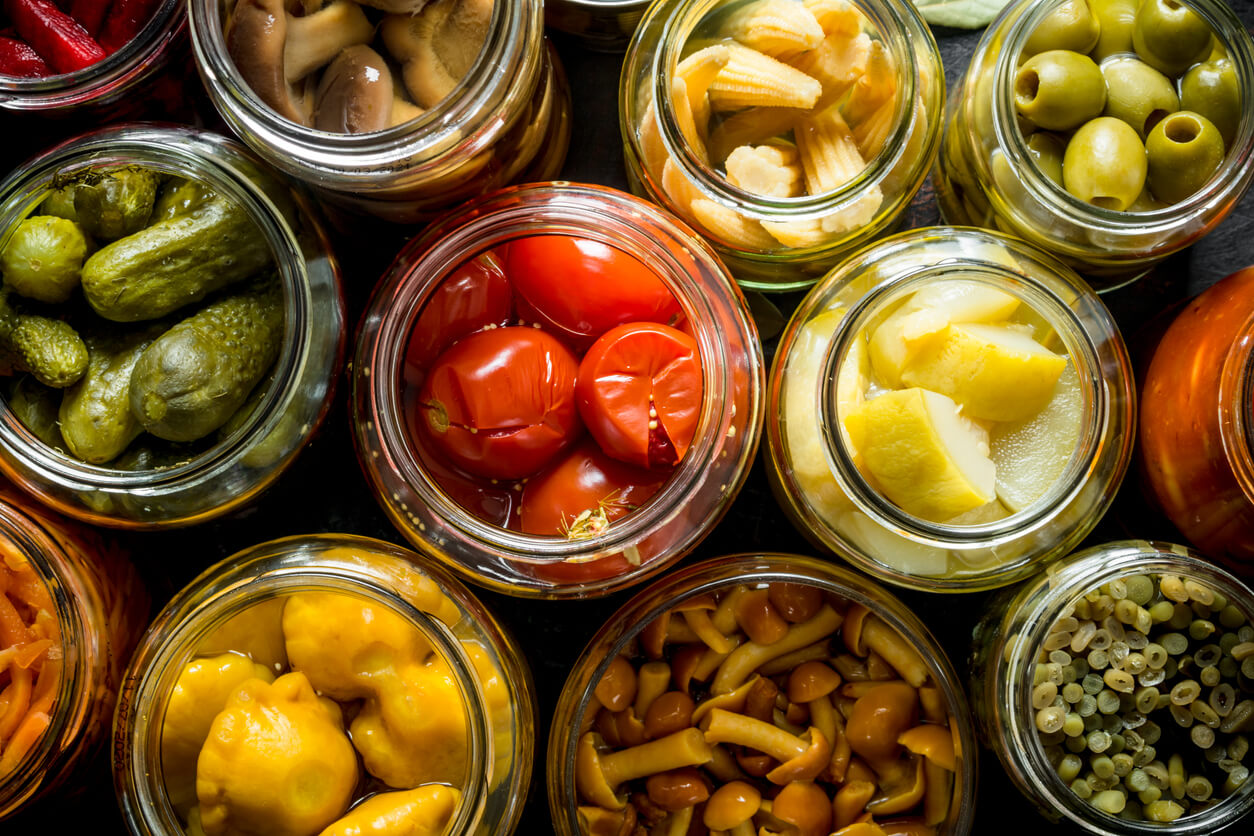
Pickling is one of humanity’s oldest and most universal preservation techniques, with roots stretching back thousands of years across nearly every continent. (To my knowledge, Antarctica sadly lacks a pickling tradition, which may explain its low population density. But maybe the cold has something to do with it as well.)
Pickling didn’t just prevent spoilage — it created tangy, complex flavors that transformed ordinary vegetables into culinary staples. From Korea (kimchi) to Eastern Europe (sauerkraut and dill pickles), to Japan (miso-cured vegetables), and to India (spicy mango pickles), cultures around the world have independently mastered this technique and made it central to their cuisines.
Commonly pickled foods include:
- Vegetables: Cucumbers, carrots, beets, onions, radishes
- Fruits: Mango, lemon, papaya
- Animal products: Eggs, fish (e.g., herring)
- Legumes and grains: Soybeans (in miso), rice bran (in nukazuke)
Clearly, improved flavor and extended shelf life are a couple of big wins in the food department, especially in places with long winters when fresh food is hard to come by. Eating is preferable to starvation, and yummy food is more enjoyable than bland food. But what about the health effects of pickles? Should we still be eating them if we have other options?
Health Benefits of Pickles
It turns out that pickles, both fermented and brined, may be good for us in a bunch of different ways, from improving gut health to helping us with blood sugar control and weight management. Here are a few:
1. Gut Health from Fermented Pickles
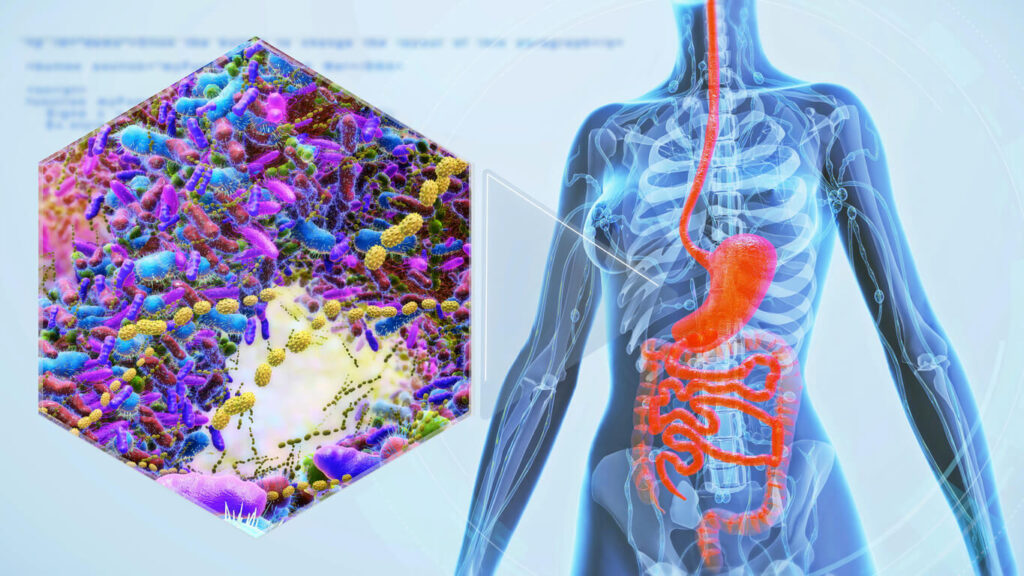
Fermented varieties contribute beneficial probiotics that are associated with having a healthy microbiome — that is, the ecosystem of microorganisms that live in your body (and outnumber you in terms of total cell count). In particular, fermented foods provide food for the beneficial bacteria that live in your colon, and which are responsible for a wide range of essential functions.
In addition to the specific products of fermentation, the vegetables and fruits add fiber to your diet. And spices commonly added to fermenting pickles offer gut-loving phenolic compounds. (Vinegar-pickled products, by contrast, usually lack live probiotics unless they’ve been specifically inoculated with them after pasteurization.)
For more on why your gut health is so important, and how to take care of your microbiome so it takes care of you, here’s an in-depth article.
And if you’re wondering why it’s so important to eat enough fiber, we’ve got you covered as well: Why Is Fiber Good For You? (And How To Get Enough Fiber!).
2. Potential Antioxidant and Anti-inflammatory Effects
Many plant compounds — particularly polyphenols and flavonoids — have powerful antioxidant and anti-inflammatory properties. Research shows that fermentation often preserves these beneficial compounds and may even concentrate them, making fermented vegetables potentially more nutritious than their fresh counterparts.
Research published in 2022 found that the total antioxidant content of chayote — an avocado-sized squash common in Central American cuisine — increased during pickling and reached its peak in late stages of fermentation. In test tube trials, the pickled chayote was able to protect human liver cells from oxidative damage.
In a 2024 study, scientists from Japan wondered if pickling Japanese apricots (umeboshi) with red perilla leaves could increase their polyphenol content. They found that the addition of perilla generated 13 times more polyphenols than plain salt pickling, and in a form that the body could more easily absorb.
3. Blood Sugar Control
Clinical studies have shown that consuming vinegar (acetic acid) before meals can help lower post-meal blood sugar and HbA1c levels in people with type 2 diabetes. So eating pickles made with vinegar could be an easy way for people (pickle lovers, anyway) to achieve those benefits.
4. Nutrient Preservation and Bioavailability
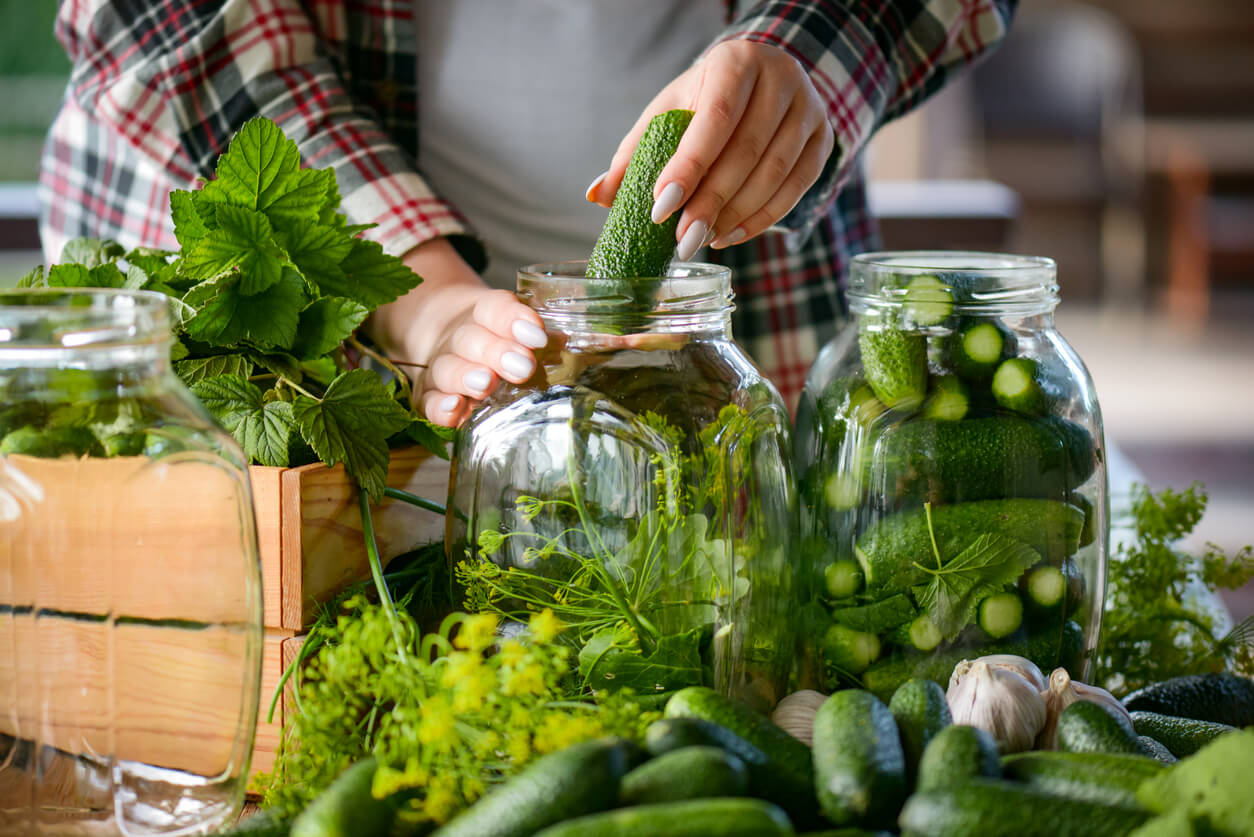
We know that certain types of food preparation (such as boiling) can reduce the levels of certain vitamins and minerals in food. What about pickling? Might it be stripping veggies of some of their goodness?
Pickling can preserve some vitamins (like vitamins K1 and trace minerals), depending on processing. It also may enhance the bioavailability of minerals such as iron and zinc. Fermentation typically reduces vitamin C content, but can produce many of the B vitamins, including folate, B12, riboflavin, thiamin, as well as vitamin K2. This is important because B12 and K2, in particular, don’t show up in most plant-based foods.
For more on the importance of vitamin B12, here’s our full article.
And to learn more about K2 and its crucial health benefits, check out this article.
5. Low Calorie, High Flavor
Pickles are generally low in calories, making them a flavorful option for people trying to manage their weight. The caveat here is that, because a lot of the flavor comes from (or is enhanced by) sodium, it’s important to monitor total sodium intake to keep your cardiovascular system healthy.
Potential Downsides of Pickles
While pickles confer benefits, they also have their risks and drawbacks.
1. High Sodium Content
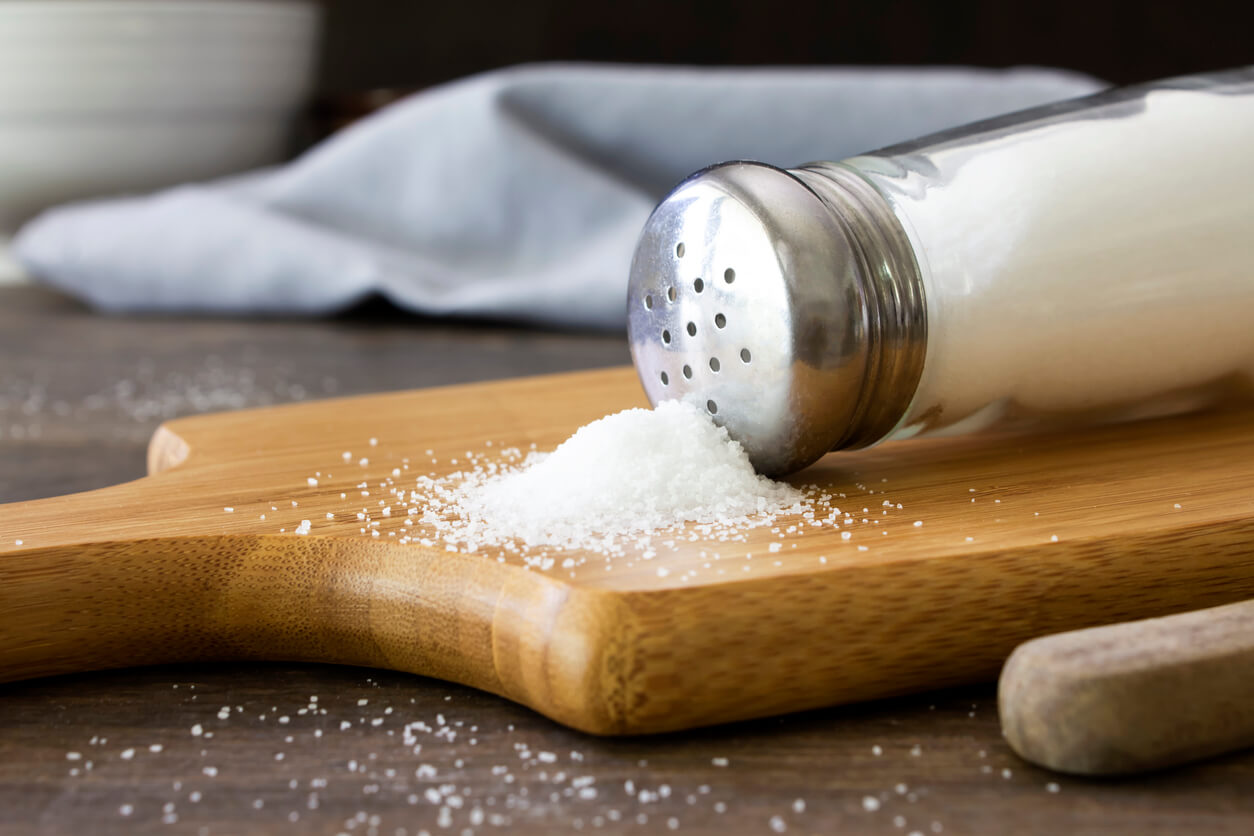
As we’ve just seen, many pickles — especially commercially produced brands — are very high in salt. Too much sodium in your diet can contribute to hypertension and cardiovascular risk.
One way to deal with this is to prepare your own pickles at home. This gives you some control over the sodium content while ensuring the presence of beneficial probiotics.
2. Risk of Stomach Cancer (in Excess)
Eating lots of highly salted or pickled foods has been linked to an increased risk of gastric cancer, particularly in populations with high intake, such as Koreans who have kimchi with just about every meal.
What does this mean for you? Eating small amounts daily is likely fine, especially if your overall salt intake is low. But eating large portions — multiple servings every day — can increase your risk of stomach cancer over time.
3. Hidden Sugars and Additives
Some commercial varieties include sugar, food dyes, and preservatives. Again, you can minimize or avoid these additives by making your own pickles with less or no sugar, and without dyes and preservatives.
4. Histamine Content
Fermented pickles can contain histamines, which are naturally produced during the fermentation process by certain bacteria. These compounds may trigger issues in individuals sensitive to histamine, including digestive problems, skin reactions, headaches, heart palpitations, and more.
5. Acid and Dental Erosion
Because they need a highly acidic environment to prevent spoilage, constant eating of pickles may contribute to erosion of the enamel of your teeth.
There are several steps you can take to reduce this risk.
Consume acidic foods during meals rather than snacking on them throughout the day.
Rinse your mouth with water for 20–30 seconds after eating pickles. This helps wash away acids and raises the pH in your mouth, reducing enamel demineralization.
Wait at least 30–60 minutes before brushing your teeth after acidic foods or beverages. Acid softens enamel temporarily, so brushing right after can cause more wear. Let your saliva help remineralize and harden the enamel first.
Chew sugar-free gum after meals to stimulate saliva flow. This helps neutralize acids and speeds up enamel recovery.
And finally, brush and floss regularly to remove plaque and support remineralization.
How To Enjoy Pickles the Healthy Way
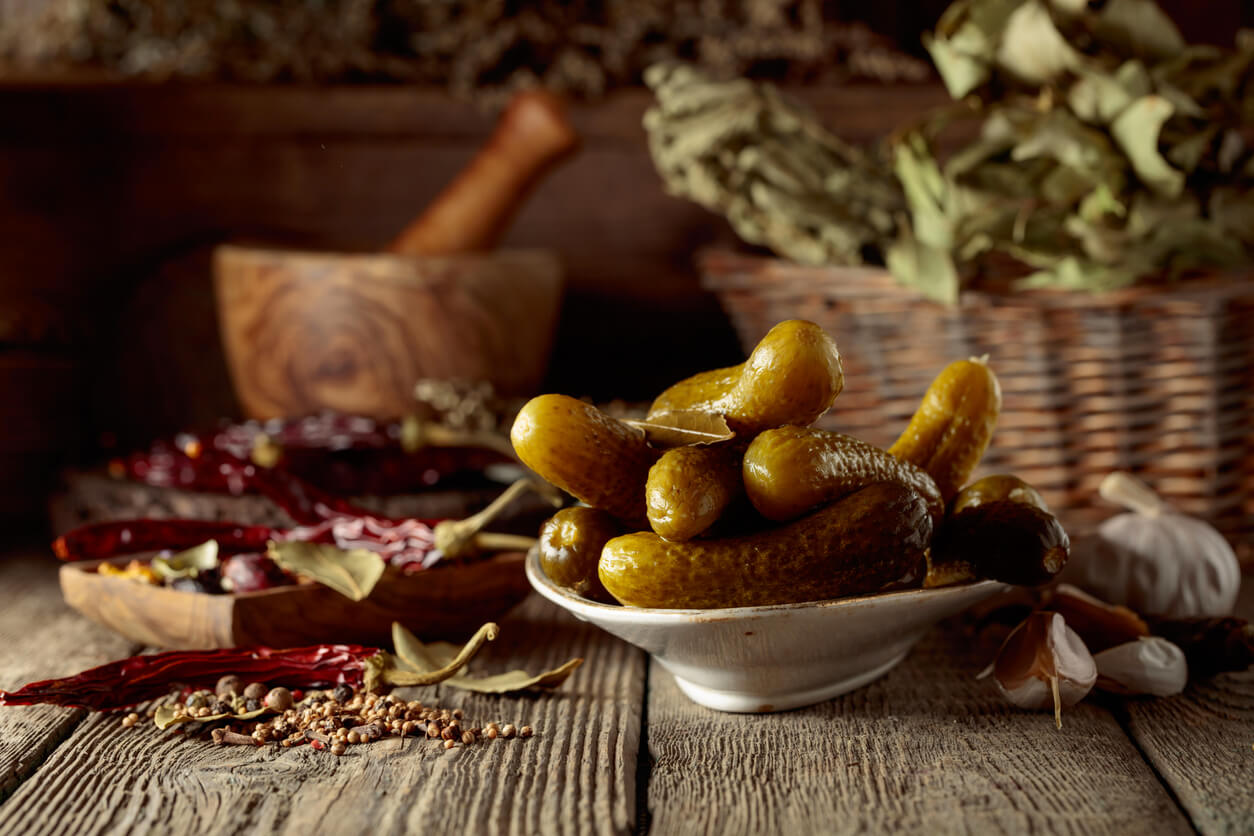
For maximum health benefits, look for naturally fermented pickles in the refrigerated section, labeled as “live cultures” or “probiotics.” The best pickles have short ingredient lists: vegetables, salt, water, and spices. Skip anything with added sugars, artificial colors, or chemical preservatives.
Since even healthy pickles are high in sodium, enjoy them in moderation — a few servings per week lets you benefit from their probiotics and antioxidants without overdoing the salt. Better yet, try making your own at home where you control every ingredient.
Healthy Pickle Recipes To Try
Whether they’re traditionally fermented or quick-pickled in vinegar, pickled veggies are a flavorful way to add a zesty boost to your snacks and meals. They bring crunch, brightness, and variety to your plate, making it easier (and tastier) to enjoy more vegetables every day!
1. Pickled Cucumbers

These quick Pickled Cucumbers offer a bright, tangy flavor and a crisp bite without the wait involved in fermentation. While they don’t contain probiotics, they are still a delicious way to enjoy pickles made with whole foods plant-based ingredients. Garlic, shallots, mustard seed, bay leaf, and black peppercorns infuse the cucumbers with savory depth, while a simple brine of organic apple cider vinegar, water, coconut sugar, and salt ties it all together. Low in sodium and big on flavor, they’re perfect for topping sandwiches, tossing into salads, or enjoying straight from the jar.
2. Homemade Green Cabbage Saurkraut

Looking to go beyond vinegar-based pickles? Homemade Green Cabbage Sauerkraut is a classic fermented vegetable that adds tangy crunch and natural probiotics to your plate. Made simply with green cabbage and salt, you can customize it with spices like caraway, fennel, or mustard seeds for extra depth and flavor. Whether you keep it simple or get creative with seasonings, kraut is a gut-friendly, flavor-packed addition to bowls, sandwiches, and more. And it’s surprisingly satisfying to make at home.
3. Pickled Carrots and Cauliflower
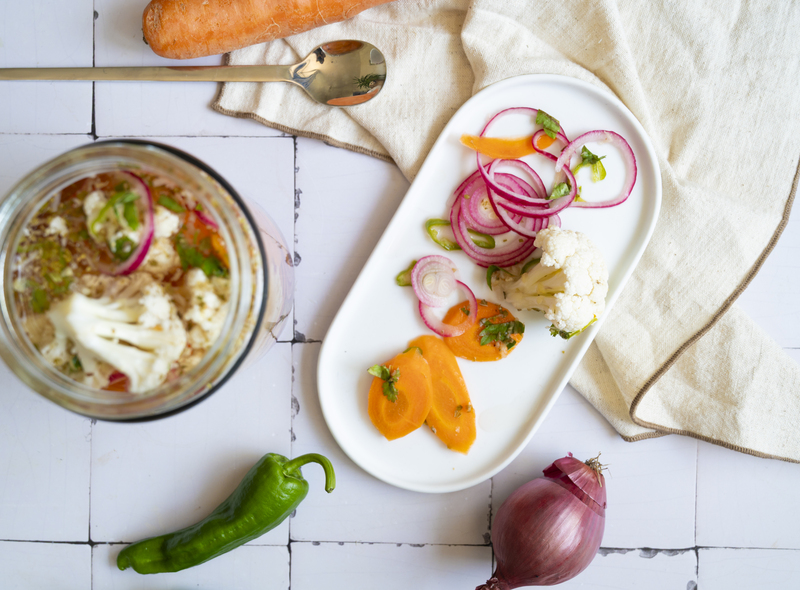
When you marinate vegetables with an acid, a little salt, and an optional touch of sweetness, you create a quick-pickled version of that vegetable. Pickling is a simple and flexible method that works with nearly any type of veggie, adding bright flavor, crunch, and character to your meals. This mix of carrots and cauliflower offers a colorful, tangy bite that pairs well with wraps, bowls, and salads. You can also mix and match vegetables, such as radishes, bell peppers, onions, or green beans, to create your custom blend. It’s a quick and tasty way to preserve produce, allowing you to enjoy bold, zesty flavors all week long.
Conclusion
Pickles can be a flavorful, probiotic-rich addition to your diet, especially when fermented and consumed in moderation. While their high sodium content and additives in commercial varieties require attention, making smart choices and opting for homemade options allows you to enjoy the tang without the trouble.



